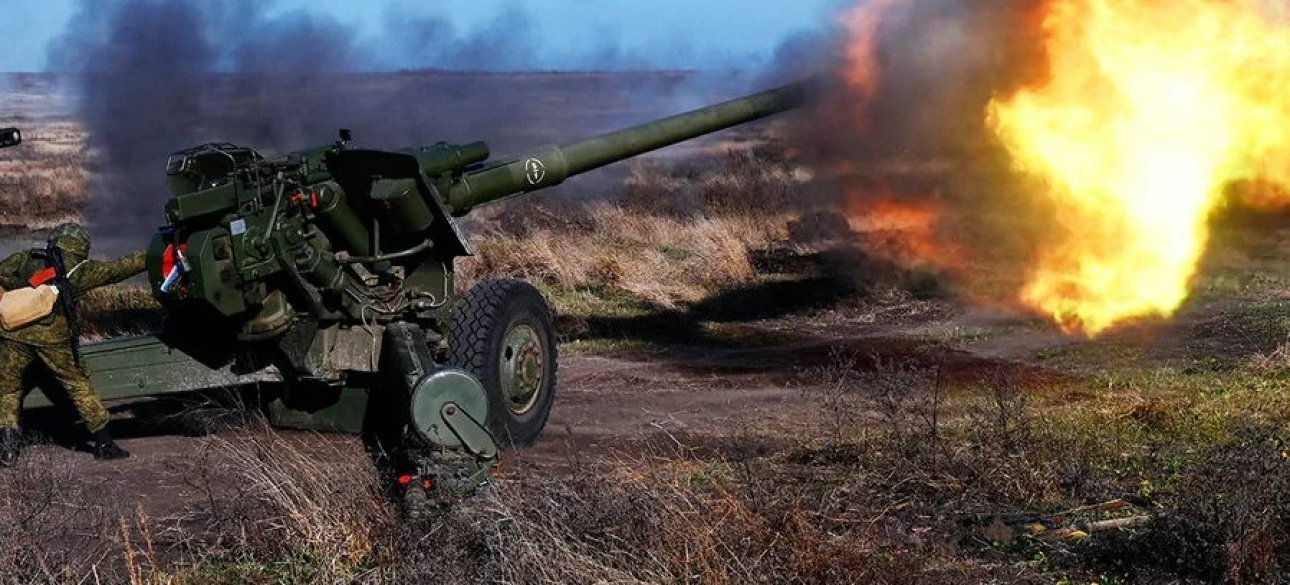
 By Victor Duda
By Victor Duda
The first two quarters are significantly rejected because they initially acted with airborne troops with their air-transportable and, accordingly, lighter guns (as SAU 2C9, as D-30 field guns), then the Donbass was attacked by the "rebels" of DNR/LNR, which were They are equipped mostly outdated material. Therefore, they should be excluded from long -term trends.
They mostly work with III/22 or IV/22 years; The proportion of self -propelled guns, for example, fell increasingly - from 80% in III/22 to 23% recently (Fig. 2). This shift was inevitable because the PTRC was not affordable; The disadvantage is not only a slower deployment of field guns, which makes them more vulnerable to counter-bread fire and drone attacks, but also a much greater need for personnel, 7-10 instead of 4-5 people, depending on the type, but also an additional tractor.
In addition, the absence of armor means that even getting from close distance causes damage. Further significant reduction is unlikely. With increasing reactivation of inventories, the technical age of the guns used has also increased as shown in Fig. 3 indicating the decade of issue. Starting from III/23, the proportion of state -of -the -art guns only slowly decreases due to new samples; It is likely that it stabilizes at the current level or grows slightly.
The same goes for in the near future and types of the 1970s, that is, above all 2C5/2A36, for which, as already stated, ammunition is a limiting factor; Their number will only decrease from about II/25 when reserves 2A36. In contrast, the types from the 50's and 60's will be partially replaced by their predecessors from the 1930s and 40's. In general, this will mean a technical step back, which will also appear on medium range (despite a very long-range M-46).
At the beginning of 2024, it had already fallen from 21-22 km to 18 km and remained at this level (Fig. 4); IV/24 growth is most likely associated with a small sample and will soon disappear. This prognosis is based on existing reserves: their average range is only 17. 2 km, which is still too high, since it is naturally not included indefinite field guns, which are predominantly less firing range.
New 2C19/2A65 compensate for this, so that the range will no longer decrease significantly, which is exactly the distribution of calibers, where the new player-130 mm M-46 appeared (Fig. 5). 152 mm will probably increase again, and 122 mm will decrease significantly-those several units that we have yet accrued for IV/24 should more or less correctly display the future picture.
However, 122 mm remains much more important than at the beginning, 152 mm is much more rare-therefore, for the same destructive effect, much more shells are required than in 2022-23. Another problem that will increase with the increase in the variety of types is more complex logistics and the need for training-probably no longer remained artillerymen who worked, for example, with M-30, and the accuracy of shooting, too, will probably be lower, which will also increase the cost of ammunition.
On the other hand, the sharp reduction of the most severe calibers (207 mm, 240 mm) is not very significant. They are mostly used to fire fortified positions, where they are already replaced by managed bombs. One of the moments that has not yet been considered is the possibility of using a weapon of foreign origin. According to North Korea and China, especially in view of the recent D-74 demonstration, guns that can only come from these two countries in large quantities.
However, North Korea wants to put only a limited amount of materials, inventories are an expression of her own paranoia, and after experience with ammunition from North Korea is doubtful that these guns are especially suitable for use at the front and are not more dangerous for her own crew than for the Armed Forces . China, of course, also does not want to transfer the latest equipment because it is preparing for its own invading war against Taiwan.
It is also doubtful whether a large number of old models will be delivered - the risk of US sanctions cannot be underestimated. In my opinion, it can not be ruled out that some will be set, but even 1,000 guns will extend the life of the stocks for only 3 months.
Given the current situation in East Asia, the significant influence of Chinese or North Korean deliveries should not be expected, so the D-74 demonstration has been pure propaganda, probably one of the few samples that are still stored in their own (museum) stocks, perhaps checking the response to the West to show the Chinese that they have no reason to be afraid of any consequences.
Since the beginning of 2024, the management of the Russian Federation approximately led the composition of active guns in line with the existing stocks. Along with a significant increase in new production since the summer of 2023, key parameters such as firing range, caliber and degree of mechanization are unlikely to change significantly.
Only the number of different types of weapons will change, some of which require different ammunition, which will complicate the logistics of ammunition and spare parts. The increasing need to use smaller reserves, perhaps also of foreign origin (D-74), will exacerbate these problems even more. Despite the decrease in stocks, they are not yet exhausted in warehouses.










All rights reserved IN-Ukraine.info - 2022